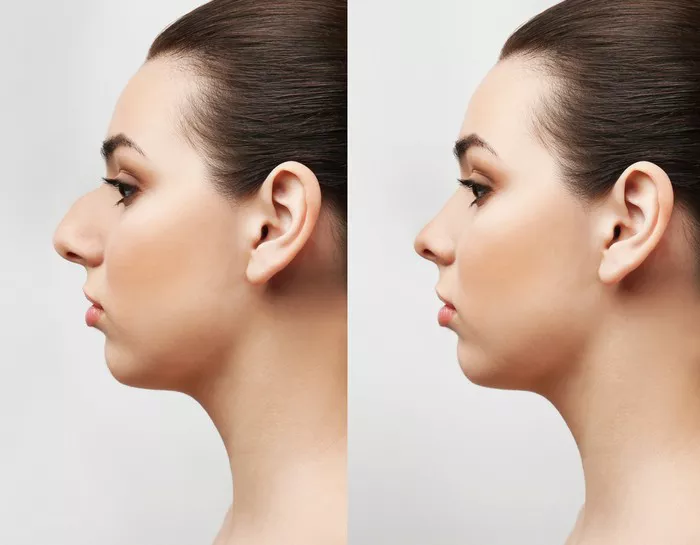Rhinoplasty, commonly known as a “nose job,” is a surgical procedure that aims to enhance the appearance and/or function of the nose. It is a popular cosmetic surgery option for individuals who are unhappy with the shape or size of their nose or have functional issues that affect their breathing. One common question among those considering rhinoplasty is: How long does the procedure take? In this article, we will explore the various factors that contribute to the duration of rhinoplasty surgery and discuss the recovery time associated with the procedure.
Understanding Rhinoplasty Surgery
Rhinoplasty is a complex surgical procedure that requires careful planning, precision, and expertise from the surgeon. The surgery involves reshaping and recontouring the nasal structures to achieve the desired aesthetic or functional outcome. The surgeon may modify the nasal bones, cartilage, or soft tissues to create a more proportionate and balanced nose that harmonizes with the rest of the facial features.
Factors Affecting the Duration of Rhinoplasty Surgery
The duration of rhinoplasty surgery can vary depending on several factors, including the complexity of the procedure, the surgeon’s experience, and the specific goals of the patient. Here are some key factors that can influence the duration of rhinoplasty:
-
Aesthetic vs. Functional Rhinoplasty
The type of rhinoplasty being performed can affect the duration of the surgery. Aesthetic rhinoplasty, which focuses solely on improving the external appearance of the nose, may generally take less time compared to functional rhinoplasty, which addresses both functional and aesthetic concerns. Functional rhinoplasty involves additional steps to correct structural abnormalities that affect nasal breathing, which can increase the overall surgery time.
-
Complexity of the Procedure
The complexity of the individual case plays a significant role in determining the duration of rhinoplasty. Each person’s nasal anatomy is unique, and the surgical approach must be tailored accordingly. Some individuals may require more extensive modifications to achieve the desired outcome, such as reshaping the nasal bones, correcting a deviated septum, or addressing nasal valve collapse. These additional steps can prolong the surgery duration.
-
Revisions or Secondary Rhinoplasty
In cases where individuals have previously undergone rhinoplasty and are seeking revision or secondary rhinoplasty, the procedure may take longer than primary rhinoplasty. Revision rhinoplasty is often more complex as the surgeon needs to work with scar tissue and previous modifications. It requires meticulous planning and precision, which can extend the duration of the surgery.
-
Surgeon’s Experience
The experience and skill level of the surgeon can influence the duration of rhinoplasty. A highly experienced surgeon who specializes in rhinoplasty procedures may be able to perform the surgery more efficiently and effectively, potentially reducing the overall duration of the procedure.
-
Combination Procedures
In some cases, individuals may opt for additional procedures in conjunction with rhinoplasty, such as chin augmentation or facial fat grafting. When multiple procedures are performed simultaneously, the total duration of the surgery will be longer.
Average Duration of Rhinoplasty Surgery
On average, rhinoplasty surgery typically takes between 1 to 3 hours to complete. However, it is essential to note that this is just an estimate, and the actual duration can vary based on the factors mentioned above. During the initial consultation, the surgeon will thoroughly evaluate the patient’s nasal anatomy, discuss their goals, and determine the most appropriate surgical approach. They will then be able to provide a more accurate estimate of the duration based on the individual’s specific case.
Recovery Time after Rhinoplasty
After the surgery, the patient will be closely monitored in a recovery area before being discharged. The initial recovery period following rhinoplasty typically lasts about 1 to 2 weeks, during which the patient may experience swelling, bruising, and mild discomfort. The surgeon will provide post-operative instructions to help manage these symptoms and promote healing.
It is important to note that while the initial recovery period may last a couple of weeks, the complete healing process can take several months. Swelling and bruising will gradually subside, and the final results of the rhinoplasty will become more apparent as the nose settles into its new shape. It is essential to follow all post-operative instructions provided by the surgeon, including avoiding strenuous activities and taking any prescribed medications to ensure a smooth recovery.
Conclusion
The duration of rhinoplasty surgery can vary depending on several factors, including the complexity of the procedure, the surgeon’s experience, and the specific goals of the patient. While the average duration of rhinoplasty surgery is around 1 to 3 hours, it is important to consult with a qualified surgeon to get an accurate estimate based on your individual case. Additionally, the recovery period after rhinoplasty typically lasts about 1 to 2 weeks, but complete healing and the final results may take several months. Remember to follow your surgeon’s post-operative instructions for a successful and smooth recovery.

